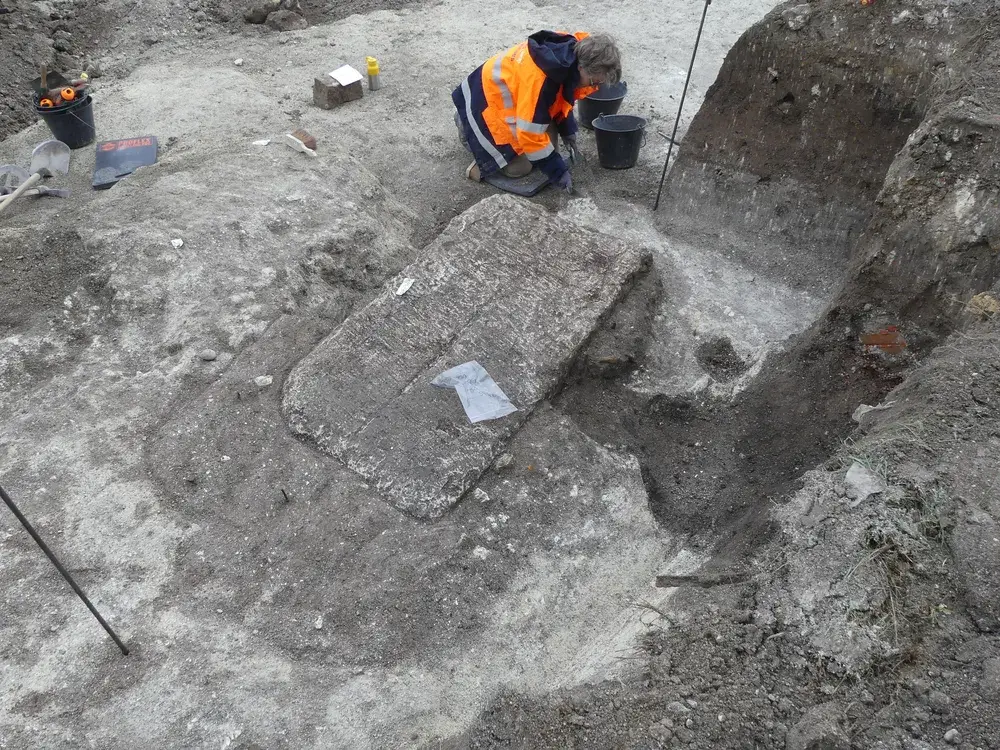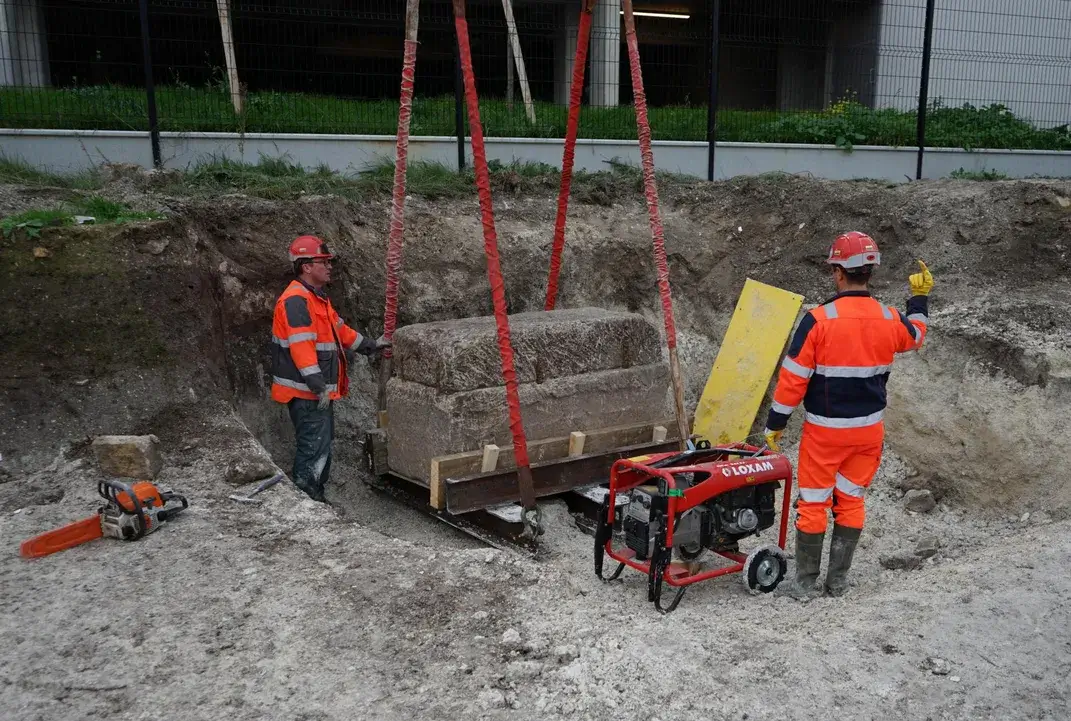
Archaeologists Discover ‘Exceptional’ Roman-Era Sarcophagus In France
The 40-year-old woman inside the tomb was buried with a ring, a comb and other items
By: Julia Binswanger | Smithsonian
Archaeologists in France have discovered a limestone sarcophagus, undisturbed since its construction some 1,800 years ago.
The tomb holds the remains of a 40-year-old woman who lived during the second century C.E. She was buried with four oil lamps, a small mirror, an amber ring, a comb and two glass containers that may have once held scented oils inside.
The sarcophagus is 3.3 feet high, 5.4 feet long and 2.6 feet wide, according to a statement from France’s National Institute of Preventive Archaeological Research (INRAP). It’s the first un-looted sarcophagus unearthed in a former Gallo-Roman city.
Researchers found the burial during excavations in modern-day Reims, a city in north-eastern France. In the second century, Reims was known as Durocortorum, one of the biggest cities in the Roman Empire.
Archaeologists Unearth Four 1,900-Year-Old Roman Swords in Israeli Cave
It was the capital of Belgic Gaul, a Roman province that included parts of what is now France, Belgium, Luxembourg, the Netherlands and Germany.

Reims is a rich archaeological site; thousands of ancient burials have been found and studied in the city. But at various points throughout history, these burial sites have sustained significant damage, many falling victim to looters. During World War I, many of the grave artefacts that archaeologists had preserved were destroyed.
The newly discovered sarcophagus is “quite exceptional,” Agnès Balmelle, assistant scientific and technical director at INRAP, tells Marie Blanchardon of the French newspaper Le Parisien, per Google Translate. “It’s the first time that we have found a tomb intact and which has not been looted. It was sealed by eight iron staples, and we were the first to explore it.”
After the team initially found the sarcophagus, learning what was inside wasn’t as easy as merely lifting the lid. Its thick stone top weighs around 1,700 pounds, according to Newsweek’s Jess Thomson. To see through it, experts X-rayed the stone and inserted an endoscopic camera inside, revealing the skeleton and personal items. Finally, they cut the iron staples holding the tomb shut and used special machinery to open it up.
Researchers don’t know the identity of the mystery woman found inside the sarcophagus. Due to the nature of her burial, they think she may have been a member of the elite.
Soon, they hope to unravel more details. The team is already working on a genetic database of data from nearby burials. Researchers plan to test DNA from the woman’s teeth and compare it against those samples, which will help them determine who she was and where she came from.
* * *
NEXT UP!
Archaeologists Figured Out How To Tell If One of These Roman Pots Was Used For Poop
Earthenware vessels can often be windows to the activities of long lost cultures. Traces of their contents can be clues to what we once snacked on, how we fed our children, and even how we cursed our enemies.
For decades, a number of conical vessels unearthed near Roman latrines were presumed to be recently emptied chamber pots. Evidence for this was purely circumstantial, yet what else would they be?
Now, archaeologists from the University of Cambridge in the UK and the University of British Columbia in Canada have confirmed these rather plain-looking containers were just what researchers thought.
Their analysis of mineralized concretions found inside earthenware dug up from the rural district of Gerace in central Sicily uncovered the preserved eggs of a species of intestinal worm.
* * *
READ MORE: Archaeologists Find 40 Beheaded Roman Skeletons With Skulls Between Their Legs
Read more on Roman Era History: An Ancient Financial Crisis Has Been Discovered… In Roman Coins
Enjoyed it? Please take a moment to show your support for Collective Spark.
We’d love to hear from you! If you have a comment about this article or if you have a tip for a future Collective Spark Story please let us know below in the comment section.
